Evaluating the Cost of Wasp Removal: Comprehensive Insights
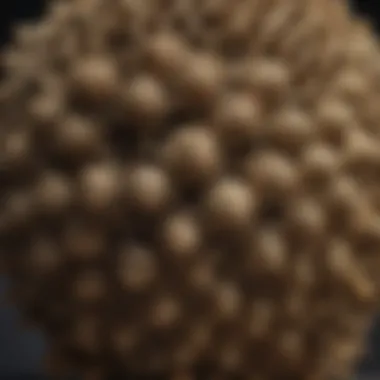

Intro
Wasp removal can seem daunting for many homeowners. Understanding the issue in depth allows individuals to wisely approach the challenge. It is vital to assess not only the immediate presence of wasps but also the potential long-term effects on your environment. Homeowners need insights into the costs associated with removal strategies, whether opting for professional services or considering DIY options.
This article aims to provide a detailed understanding of the expenses involved in wasp removal. We will explore various control methods and strategies, guiding readers to make informed decisions that align with their unique circumstances.
Understanding the Pest
Identification
Wasps can often be confused with other insects, such as bees. However, they have distinct characteristics. Common wasp species in many backyards include the yellow jacket and paper wasp. Identifying wasp nests is essential, as the removal approach may differ based on species.
- Yellow jackets have a distinctive black and yellow pattern, while
- Paper wasps have longer bodies and a more slender appearance.
Knowledge of these differences facilitates accurate identification, which is the first step in determining removal strategy.
Life Cycle
Understanding the life cycle of wasps is crucial for effective control. Wasps have a seasonal life cycle that begins in spring, when fertilized queens emerge from hibernation. They establish new nests and lay eggs. As summer progresses, these nests grow. By fall, nests can contain hundreds of adult wasps.
For effective removal, local conditions and the timing of removal efforts should be considered. By recognizing the life stages of these pests, homeowners can choose an optimal time for intervention.
Pest Prevention Strategies
Environment Modification
Preventing wasps from establishing nests in the first place is often more economical than removal. Some effective environment modifications include:
- Removing sources of food, such as open trash bins and compost piles.
- Eliminate standing water spots that might attract wasps for hydration.
- Culling excess vegetation around the house, in order to minimize potential nesting sites.
These changes can greatly reduce wasp presence in a residential area.
Physical Barriers
Another preventive measure involves installing physical barriers:
- Screens on windows and doors
- Wasp traps placed strategically around the property
These barriers can protect your home from unwanted wasp intrusion. Additionally, they serve as a deterrent to nesting attempts.
Control Methods
Chemical Control
If wasps do become a problem, chemical control is a common method. Products such as insecticidal sprays can be effective if used properly. It is essential to apply these chemicals at night when wasps are less active.
- Follow the manufacturer's instructions to ensure safety.
- Reapplication may be necessary if you have recurring wasp activity.
Biological Control
Biological control methods are also gaining recognition. These may involve encouraging natural predators, such as birds. Setting up bird feeders might help attract insect-eating birds.
Engaging in biological control can have longer-lasting effects, as it works within the natural ecological system rather than relying heavily on chemicals.
Understanding these methods enhances your ability to manage wasp populations effectively. Staying aware of environmental factors can lead to sustainable pest control practices.
Ultimately, evaluating the cost of wasp removal involves weighing your options. Each method comes with its own set of advantages and challenges, making it important to align your choice with your specific situation.
Understanding Wasp Behavior and Nest Formation
Understanding the behavior of wasps and how they form nests is crucial for effective removal and management strategies. Wasps exhibit complex social structures and behaviors that can influence their nesting habits and interactions with humans. Recognizing these elements can help homeowners make informed decisions about controlling wasp populations, either through professional services or DIY methods.
Types of Wasps and Their Habitats
There are numerous species of wasps, each with its unique characteristics and preferred habitats. For example, yellow jackets, a common type of wasp, favor nests built in the ground, while paper wasps typically construct their nests in sheltered areas like attics or eaves. Understanding these distinctions is important because it informs the removal approach. Knowing the type of wasp can guide decisions about when and how to remove nests.
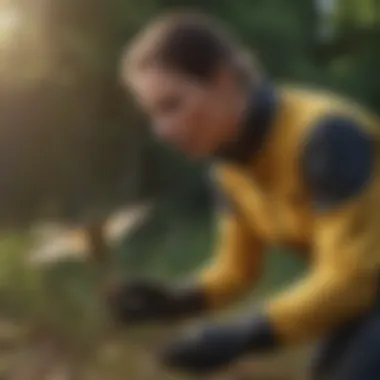
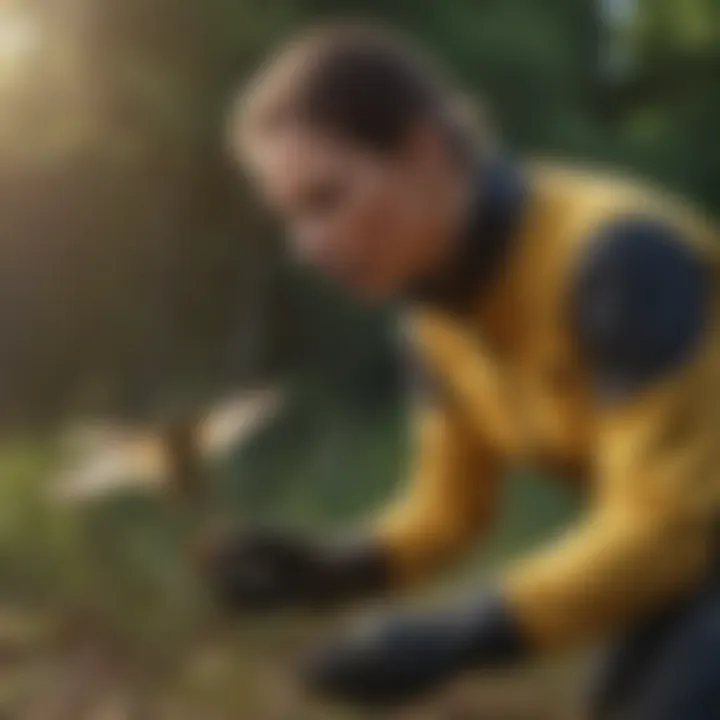
Moreover, these habitats often dictate when wasps are likely to become a nuisance. For example, yellow jackets are more aggressive in late summer when their food sources are dwindling.
Life Cycle of Wasps
The life cycle of wasps includes several stages: egg, larva, pupa, and adult. Initially, a queen wasp emerges from hibernation in the spring and begins building a nest. She lays eggs, which hatch into larvae. Wasps rely heavily on cooperative behaviors during this time. The worker wasps, which are infertile females, tend to the larvae and help with nest maintenance. Understanding this cycle allows homeowners to anticipate when to monitor for wasps or when intervention may be necessary. For instance, early spring is usually the best time to address potential nests before they grow larger and more populated.
Signs of Wasp Infestation
Identifying signs of wasp infestation is essential for timely intervention. Common indicators include:
- Increased Wasp Activity: Seeing multiple wasps flying around your home can signal nearby nests.
- Visible Nests: Observing nests on your property is a clear sign that wasps have established a presence.
- Aggressive Behavior: If wasps seem more aggressive, especially around food sources, it may indicate they are defending their nest.
Effective monitoring of these signs can prevent infestations from escalating into more serious problems.
Understanding the behavior and lifecycle of wasps gives homeowners valuable insight into when and how to manage these pests. This knowledge ultimately contributes to making informed decisions regarding pest control strategies, ensuring a safer living environment.
Assessing the Need for Wasp Removal
Understanding when to intervene in wasp situations is crucial for homeowners. Wasps can be beneficial in controlling pest populations, but when they invade our spaces, they can become a threat. Evaluating the necessity for wasp removal not only contributes to personal safety but also helps in maintaining the balance of the local ecosystem.
A key element to consider is the types of wasps involved. Some wasp species are more aggressive, while others rarely bother humans. The specific behavior patterns of these insects can aid in deciding if professional removal is necessary. Additionally, the location of the nest plays a significant role. Nests situated in high traffic areas, such as near home entrances or children's play areas, often demand immediate action.
Another aspect to evaluate is the seasonal factors. Wasps tend to be more aggressive during late summer and early fall. At this point, they are more likely to defend their nests and can pose a higher risk to individuals nearby. Recognizing this seasonal behavior can guide the urgency of the removal process.
In summary, assessing the need for wasp removal requires a thorough understanding of the situation. It involves analyzing the species, nest location, and timing. Making an informed decision can greatly enhance safety and reduce potential negative impacts on the environment.
When to Consider Professional Help
In certain scenarios, the involvement of experts for wasp removal is essential. If there is an increased risk of being stung, particularly in areas frequented by children or pets, it is wise to consult professionals. They are trained to handle such situations effectively and safely. In addition, if a nest is large or high up in difficult-to-reach areas, such as on rooftops or inside walls, this is another sign that professional assistance may be necessary.
Another factor is the time and resources available for DIY approaches. If a homeowner is unsure about handling the situation or if they lack the equipment, it may make more sense to rely on trained professionals. Their experience not only minimizes risk but also ensures a thorough job.
Lastly, if someone has a known allergy to wasp stings, calling in professionals should be a priority. The potential for severe reactions means the best course of action is to minimize exposure to these insects.
DIY Approaches: Pros and Cons
Many individuals consider DIY methods for wasp removal. There are some benefits to this approach. First, it can save money. Doing it yourself eliminates the need for a paid service. It can also provide a sense of accomplishment when successfully removing a nest. Furthermore, it allows for immediate action, which can sometimes be necessary.
However, there are notable drawbacks. One major concern is safety. Without proper knowledge, homeowners may inadvertently provoke the wasps, leading to stings or more aggressive behavior. Additionally, if the job is not done correctly, the wasps may return, requiring subsequent intervention later on.
Furthermore, some DIY methods can be ineffective, leaving the problem unresolved. It is important to weigh these factors carefully before proceeding with self-removal strategies.
"Assessing whether to engage professionals or take on DIY methods relies heavily upon the unique characteristics of the wasp situation and the individual's capacity to handle it."
Cost Breakdown of Wasp Removal Services
Understanding the costs involved in wasp removal services is critical for homeowners. Wasps can pose risks to safety and comfort, necessitating timely and effective removal. The cost factor is not only about the price of the service but also involves various influencing elements that can dramatically affect the final bill. Analyzing these costs gives insight into choosing the best removal strategy, balancing between financial expense and effective pest control. This section will help you grasp the key components that form the overall cost structure, enabling you to make more informed decisions regarding wasp management in your home.
Factors Influencing Service Pricing
Service pricing for wasp removal is influenced by multiple aspects. These can include:
- Location: The geographic area significantly affects pricing. Urban settings might see higher service fees due to increased demand and operational costs for pest control companies.
- Type of Removal Service: Different techniques, like nest removal or extermination, come with varying costs. A complete nest removal often requires more time and effort than a simple pesticide application.
- Size and Accessibility of the Nest: Larger nests or those situated in hard-to-reach places tend to require special equipment and additional labor, which raises costs.
- Time of Year: Seasonality impacts the pricing structures. During spring and summer, when wasps are more active, prices might increase due to high service demand.
- Company Reputation: Well-established companies may charge a premium for expertise and reliability, while new or lesser-known providers may offer lower rates to attract customers.
These factors combined can lead to a significant variation in service pricing. Understanding them provides clarity on what influences the overall cost and helps homeowners budget appropriately.
Average Prices of Professional Services
When homeowners consider professional services for wasp removal, it's important to be aware of average costs. This can vary widely depending on several factors outlined above. Typically, you can expect the following price ranges:
- Basic Treatment: For standard chemical treatment options, costs often range from $100 to $300.
- Nest Removal: Complete nest removal is usually priced between $150 and $500, depending on the complexity involved.
- Emergency Services: If a situation requires immediate attention, emergency services can start at around $250 and may surpass $600 for extensive removals.
Note: Always ask for a detailed quote to ensure you're aware of every potential fee. Transparency in pricing helps build trust between homeowners and service providers.
DIY Wasp Removal Strategies and Costs
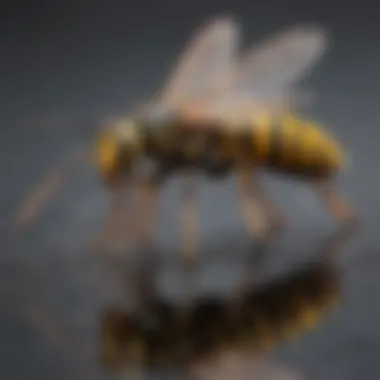
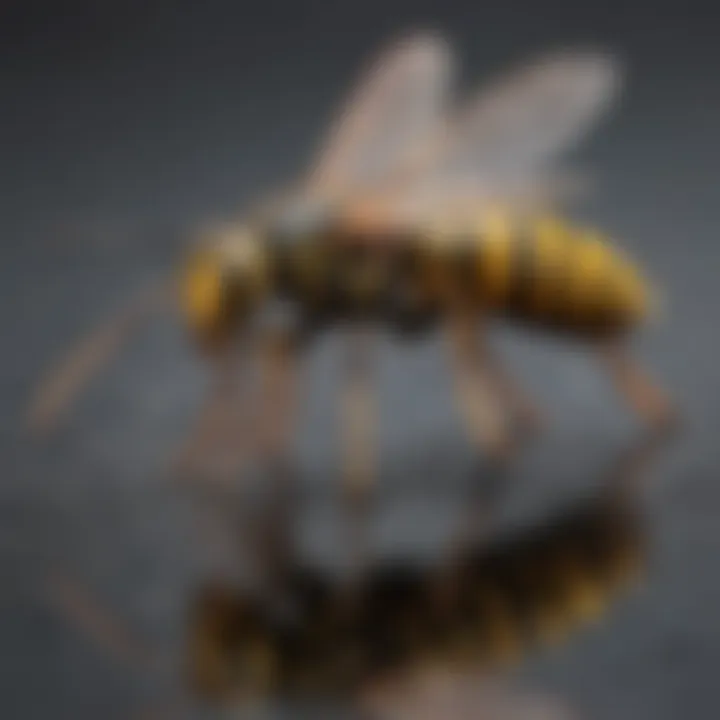
Understanding the options available for DIY wasp removal is crucial for many homeowners. The significance of this topic lies in balancing efficiency, cost, and safety. Choosing to manage wasps on one’s own can save money, but it requires knowledge about effective techniques and potential hazards. Effective strategies often depend on the specific wasp species and the location of the nest.
Common DIY Techniques
Several methods exist for homeowners looking to tackle wasp problems independently. Here are some commonly used techniques:
- Wasp Traps: These traps attract wasps using sweet or protein-based baits. The trapped wasps cannot escape, leading to a decline in the local population.
- Soap and Water Solution: Mixing dish soap with water is known to suffocate wasps. Spraying this solution directly on wasps or nests can be effective, although it requires careful aim and timing.
- Peppermint Oil Spray: Wasps are known to dislike certain essential oils. Creating a spray with peppermint oil diluted in water can deter them from areas you want to protect.
- Nest Removal: If accessible, removing nests at night can be effective. This task should be approached cautiously, ensuring the area is well-lit and clear of disturbance.
All these methods require a degree of preparation and caution. Homeowners must ensure they are wearing protective clothing, such as long sleeves and gloves, to avoid stings.
Cost Implications of DIY Methods
Cost is a key factor in opting for DIY strategies. Here are some financial aspects to consider:
- Initial Investment: Creating wasp traps or purchasing soap and peppermint oil is relatively inexpensive. Most supplies are available at local stores or online, costing as little as $10 to $50 overall.
- Time Considerations: Investing time is another factor. These methods can require consistent monitoring and, in some cases, repeated applications over time.
- Potential Risks: Handling wasps without professional assistance can lead to stings, which may incur medical costs if allergic reactions occur. This risk is often underestimated, but it is worth factoring into the decision-making process.
In summary, while DIY wasp removal methods can lower costs and offer a hands-on approach, they also demand thorough understanding and awareness of personal safety. Weighing these factors diligently can lead to wiser choices when managing wasp infestations.
Ecological Considerations in Wasp Management
Wasp management is not just about removing these pests from the vicinity of our homes. It encompasses various ecological aspects that should not be overlooked. Understanding the ecological implications of wasp removal is crucial for making informed decisions. When wasps are managed without considering their role in the ecosystem, we risk disrupting natural processes that benefit the environment.
By their nature, wasps are predators and parasites of many pest species. They can help control the population of insects that may harm your garden or property. Therefore, before hastily deciding on removal, one should first evaluate the ecological balance and their potential benefits. Eliminating wasps can create gaps in the local food chain, potentially leading to a rise in pest populations, which could result in greater long-term issues.
Moreover, the choice of removal method greatly influences ecology. Some methods are more environmentally damaging than others, leading to unexpected consequences. Understanding these effects encourages more thoughtful management practices, ensuring the health of both human and ecological communities.
Impact of Wasp Removal on Ecosystem
The impact of wasp removal extends beyond immediate safety concerns. When wasps are removed from an area, it creates a vacuum in the local ecosystem. This vacuum can allow certain pest species to proliferate. For instance, aphids are often controlled by wasps, and their unchecked growth can damage gardens and plants.
Additionally, removing wasps indiscriminately can affect other species. Birds and mammals that depend on wasps as a food source may struggle to find adequate nutrition. Furthermore, the chemical treatments used in removal can contaminate local soil and water, impacting other wildlife and plants in those ecosystems. It is vital to assess these risks carefully and consider the potential long-term ecological consequences before proceeding with removal.
"Understanding the implications of wasp management can help individuals act in a way that is sustainable and beneficial to their environment."
Eco-Friendly Alternatives to Chemical Treatments
Choosing eco-friendly alternatives for wasp management can mitigate negative ecological impacts. Several methods can replace harsh chemicals that are harmful to local ecosystems. Here are some effective strategies:
- Physical Barriers: Using screens on windows and doors can help keep wasps out of homes without harming their population. This method is preventive and helps maintain natural ecosystems.
- Traps: Commercial wasp traps that use natural bait are an alternative to chemical sprays. These traps can decrease wasp populations without significant ecological damage.
- Natural Repellents: Essential oils such as peppermint and clove can act as natural wasp repellents. They can deter wasps without introducing toxins into the environment.
- Habitat Management: Creating less favorable living conditions for wasps, such as removing food sources (like exposed garbage), can deter them without removal.
Long-term Strategies for Wasp Prevention
When homeowners consider the challenges posed by wasps, thinking ahead is essential. Long-term strategies for wasp prevention can mitigate future infestations and reduce the overall cost of removal. Effective prevention depends on understanding the environmental factors that attract wasps and implementing sustainable methods to keep these pests at bay.
Environmental Modifications
Making environmental changes can significantly reduce wasp attraction. This is about adjusting the surroundings to make it less hospitable to these insects. There are several modifications you can implement:
- Remove Food Sources: Wasps are drawn to areas with open food. Storing trash in tightly sealed containers or using covered compost can help.
- Seal Potential Nesting Areas: Inspect home exteriors for holes or gaps. Close any openings in walls, roofs, and under eaves.
- Maintain Gardens: Regularly trimming bushes and cleaning up fallen fruit can decrease the chances of attracting wasps to your property.
- Use Decoys: Some homeowners find success using fake nests. Wasps tend to avoid areas that appear already occupied.
Each action plays a vital role in creating a less appealing environment for wasps. Maintaining these preventative practices year-round is necessary for long-term success.
"An ounce of prevention is worth a pound of cure," applies particularly well to the context of wasp management. Staying proactive can save time and resources later.
Monitoring and Maintenance Techniques
Once environmental modifications are made, monitoring and maintenance are next steps. Continual vigilance helps ensure that wasps do not return. Here are some techniques:
- Regular Inspections: Schedule periodic checks around your property, focusing on areas where wasps might build nests.
- Observation: Take note of wasp activity and understand peak times for infestation, often late summer.
- Maintenance of Modifications: Ensure that previous changes remain effective. Regularly clean trash bins and check sealants for any wear.
- Inform Neighbors: Share information with your community about wasp management. Collective awareness can enhance overall neighborhood efforts.
Engaging in these proactive assessments will help identify any potential issues before they escalate. Staying diligent aids in fostering a wasp-free living environment, leading to greater peace of mind.
By adopting both environmental modifications and monitoring techniques, homeowners can take significant strides in preventing wasp infestations. This whole process not only protects properties but also allows for a more harmonious coexistence with nature.
Evaluating the Effectiveness of Various Methods
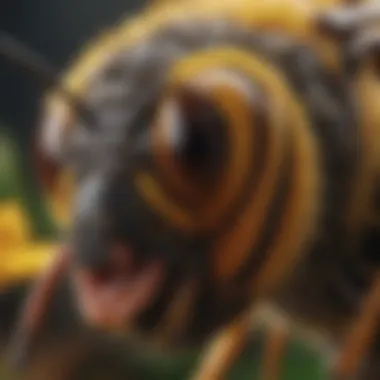
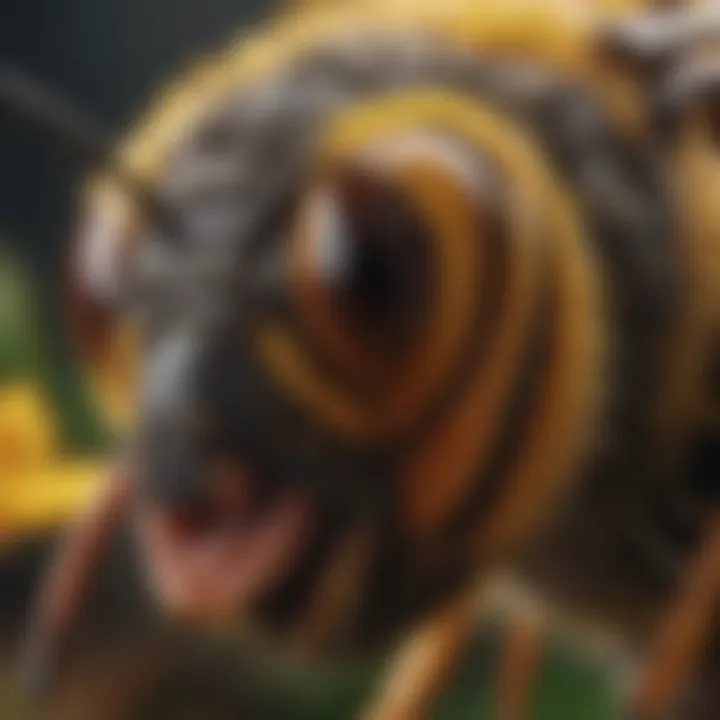
Assessing the effectiveness of wasp removal methods is crucial for homeowners and professionals alike. This evaluation guide not only informs about the success rates but also elucidates the advantages and potential drawbacks of various intervention strategies. Understanding how well different removal techniques perform allows individuals to make informed choices tailored to their specific needs, ultimately ensuring better management of wasp populations.
Success Rates of Professional Removal
Professional wasp removal services often provide a structured approach to address infestations. These services typically employ certified experts equipped with the tools and knowledge required for effective removal. Statistically, the success rates of these professionals are notably high.
Research indicates that skilled technicians may achieve as high as a 90% success rate in eliminating infestations on the first attempt. This is largely because they understand wasp behavior, effective treatment methods, and safety protocols. They also have access to commercial-grade pesticides and other specialized equipment that homeowners typically do not possess.
Another crucial aspect is the guarantee that many services offer. In some cases, if the wasp problem persists after treatment, professionals will return to address the issue at no additional charge. This warranty can provide a level of reassurance for those concerned about potential hazards associated with wasps.
However, the success of professional removal often hinges on several factors, such as:
- Type of Wasp: Different species react distinctly to treatments.
- Location of the Nest: Accessibility can affect treatment methods and results.
- Time of Year: Seasonal changes can impact wasp activity and behavior.
"Choosing professionals not only helps in immediate relief but also in long-term management strategies."
Effectiveness of DIY Strategies
Turning to DIY strategies can be a tempting alternative for many homeowners due to potential cost savings. However, the effectiveness of these methods varies widely depending on the approach taken. DIY options often include the use of traps, sprays, and home remedies.
While some DIY approaches may yield short-term results, studies show that the overall success rate is significantly lower than professional methods, often ranging from 30% to 60%. One primary reason is that individuals may lack a comprehensive understanding of the wasp species involved or the most effective elimination techniques.
Key considerations when utilizing DIY strategies include:
- Safety Measures: Ensuring personal safety can be more challenging when handling wasp nests.
- Effectiveness of Products: Not all store-bought sprays or traps are equally effective. Researching and selecting reliable products is essential.
- Time Investment: DIY methods often require more time and repeated efforts to achieve satisfactory results.
Many homeowners report feeling overwhelmed when faced with a significant infestation. This can lead to poor decision-making and ineffective treatments. In contrast, professional services typically streamline the process, allowing for quicker resolution of issues.
In summary, evaluating the effectiveness of both professional and DIY methods highlights the importance of informed decision-making. Each approach has its merits, but weighing success rates, safety, and overall efficacy can guide homeowners towards the best strategy for their individual circumstances.
Case Studies of Wasp Management
The analysis of case studies related to wasp management is fundamental in understanding how different strategies play out in real-world scenarios. These accounts provide valuable insights into the effectiveness of various removal methods, whether they are conducted by professionals or by homeowners tackling the issue themselves. By examining both successful and unsuccessful interventions, one can better gauge the most effective techniques for wasp removal and prevention.
Through these studies, we highlight essential elements such as the cost-effectiveness of services, the time frames needed for successful removal, and the overall safety for the residents involved. These factors are significant as they influence decision-making for those facing wasp infestations. Such evaluations allow homeowners to weigh their options carefully and choose approaches that not only align with their budgets but also minimize risks associated with wasp-related incidents.
Successful Professional Interventions
Professional wasp removal services possess the necessary expertise and tools to address infestations effectively. For instance, consider a case where a homeowner engaged ABC Exterminators to handle a large wasp nest in a tree close to their house. The professionals assessed the situation first, determining the type of wasps and the nest's location. After a thorough assessment, they employed specialized equipment and techniques to eliminate the nest safely.
The total cost for this service came to a reasonable $150, which included the initial consultation and removal. In this instance, the homeowner noted that the prompt action had removed the immediate threat from their property. Also, it reduced the risk of future infestations since the experts informed them of ongoing preventive measures. This case illustrates how hiring professionals can lead to peace of mind and effective removal without compromising safety.
Homeowner Experiences with DIY Removal
On the other hand, some homeowners prefer to adopt DIY methods for wasp removal. A notable example involved Sarah, a homeowner who discovered a small nest under her porch. Opting for a DIY approach, she purchased a commercial wasp spray from the local hardware store for $15. Following the instructions provided, she attempted to remove the nest during the evening when wasps are less active.
Initially, her method seemed successful as she was able to eliminate most of the wasps. However, a few days later, Sarah noticed that more wasps returned. Upon researching, she learned that she had not destroyed the nest entirely. This experience highlighted the challenges of DIY methods, where incomplete removal can lead to recurrent issues.
While the upfront cost was low, the long-term implications of needing to repeat the process made it less economical. This case emphasizes the value of understanding one’s limitations in pest management, reinforcing that professionals may be warranted in scenarios where DIY efforts fall short.
"Learning from real experiences allows homeowners to make informed decisions about wasp management strategies."
In summary, the analysis of various case studies allows for a greater understanding of the dynamics surrounding wasp removal. These narratives offer lessons on both the advantages of engaging professionals and the potential complications of choosing DIY approaches. As homeowners navigate the complexities of wasp management, these insights will prove invaluable in deciding the best course of action.
End: Making Informed Decisions
In the realm of wasp removal, making informed decisions is crucial for homeowners and others affected by infestation. The choices around methods employed, whether professional services or DIY approaches, have substantial implications not only on costs but also on effectiveness and safety. Engaging in wasp management without adequate knowledge can lead to higher expenses and possible safety concerns.
Weighing Costs Against Risks
When considering wasp removal, it is important to weigh the costs against potential risks. The financial aspect of hiring professionals can seem high at first, yet when compared to DIY methods, it often includes guarantees for effectiveness and safety, particularly for those who are allergic to wasp stings.
- Direct Costs: Hiring a professional pest control service can range from $100 to $2,000, depending on factors like nest location and extent of the infestation. In contrast, DIY methods often require the purchase of materials that can add up quickly.
- Indirect Costs: If a DIY approach fails, it may escalate the problem, resulting in more extensive damage or health risks. A professional offering a warranty may save costs in the long run.
Ultimately, evaluating these costs requires one to also consider their own comfort and safety levels with various methods of removal.
Future Trends in Wasp Control
As homeowners increasingly seek effective pest control methods, several trends are emerging in wasp management. The future of wasp control lies in a combination of technology and ecological awareness.
- Smart Technology: Advances in pest control technology are leading to the development of smart traps and sensors, which provide real-time data on wasp activity. This information can guide homeowners on when to act.
- Natural Solutions: An emerging focus on eco-friendly wasp removal methods is gaining traction. These alternatives not only address the infestation but also consider environmental impacts.
- Community Awareness: Engaging local communities in wasp management programs can enhance the understanding of how wasps operate and reduce risks associated with infestations.







